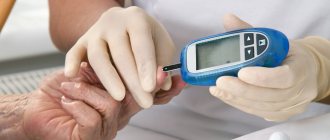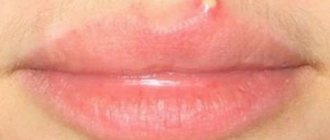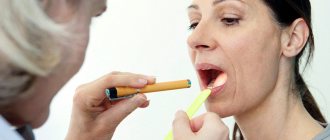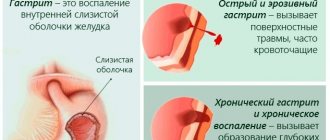Sometimes people feel a musty taste in their mouth. What are the reasons for this and what to do if obvious discomfort occurs? We will answer all questions in more detail. Each person must understand how dangerous a particular symptom is and what it may indicate.
In some situations, such a taste is easy to eliminate, and it is not associated with any internal disorders. But in other cases, this sign indicates serious problems and pathologies that can only be cured in a hospital setting. Therefore, you should not ignore it and consult a doctor for diagnosis as early as possible.
Symptoms
To determine what disease or phenomenon the taste of mold in the mouth is a sign of, you need to clarify in combination with what other problems it is detected and when exactly it bothers you.
For example, if a person has been in a room with high humidity for a long time, where there is musty, stale air, then along with the unpleasant odor, a headache, cough, and runny nose appear. It is possible that infection with pathogenic microorganisms has occurred. Similar symptoms also occur in people who work in the textile, agricultural, paper or chemical industries.
In the presence of viral or infectious diseases of some organs, additional concerns include sore throat, runny nose, inflammatory processes in the oral cavity, etc. If the taste is associated with the functioning of the gastrointestinal tract, then the patient complains of the usual symptoms in the form of frustration, nausea, vomiting and etc.
Based on these manifestations, doctors are able to suspect what specific problem influenced the appearance of the unpleasant feeling and the functioning of which organ needs to be checked more carefully.
Oral problems after coronavirus
A study was recently published showing that more than 80% of patients who have had coronavirus infection show signs of various oral lesions. The most common disorders are enlarged salivary glands and dry mouth. These symptoms were observed in 122 hospitalized patients who took part in the study.
Although scientists are actively considering the impact of coronavirus on various body systems, little is known about its long-term effects on oral tissue. In this paper, the authors concluded that after coronavirus, patients may experience oral lesions even months after discharge.
“In a retrospective prospective cohort study, it was found that the majority of patients who have had coronavirus experience long-term inflammatory processes and disorders in the oral cavity during the period of clinical recovery. It is likely that the virus actively targets tissue in the oral cavity,” says the author of the work, Dr. Enrico Guerlone, professor of clinical dentistry at the University of Vita-Salute San Raffaele, director of the department of dentistry at the University Hospital in Milan.
The work involved 122 patients hospitalized with a diagnosis of coronavirus infection and treated at the Hospital of the University of San Raffaele for the period July 23-September 7, 2021. 3 months after discharge, patients underwent a full dental examination, examination of the face and jaw.
The most common consequence of coronavirus in the oral cavity was an increase in the size of the salivary glands. The symptom was observed in 38% of participants, and was common in older patients, or when the patient had a more severe course of coronavirus.
A quarter of patients had dry mouth, and 18% had weakness of the masticatory muscles. The authors noted that dry mouth was more common in older patients, those with diabetes, and chronic obstructive pulmonary disease. Weakness of the masticatory muscles was more common among the younger group of patients.
In addition, disorders such as facial pain and damage to the nervous system were noted. Some patients presented the following complaints: dysfunction of the temporomandibular joint (7%), sensation of goosebumps on the face (3%), trigeminal neuralgia (3%).
Some participants experienced a white coating on the tongue, aphthous stomatitis, disturbances and changes in taste and smell. One patient complained of facial asymmetry.
“It is likely that the cells of the oral cavity and the immune system of the mucous membranes provide attractive and accessible environments for the penetration and multiplication of viral particles,” the authors say, clarifying that it is impossible to be absolutely sure that lesions in the oral cavity were a direct consequence of the coronavirus.
Thus, in patients with an increase in the size of the salivary glands, the coronavirus developed in a more severe form - with higher rates of the inflammatory process. Therefore, such patients were prescribed a wider course of antibiotics, which could disrupt the microflora in the oral cavity.
“It is more likely that the lesions in the oral cavity arose as a result of the body’s inflammatory response, which is considered the main reason for the prevalence and high mortality of the disease,” the researchers said.
Despite the fact that it was not possible to accurately establish the mechanism of the occurrence of lesions in the oral cavity after coronavirus, nevertheless, the authors described the possible consequences of the disease in the oral cavity. Despite the fact that this topic requires further clinical research, the authors consider it their merit that they were able to draw attention to problems in the oral cavity after coronavirus.
“Dentists managed to contribute to the study of coronavirus infection and deepen scientific knowledge about this new disease.”
Causes of taste in mouth
Based on when this sensation appears, you can suspect why it happened:
- After a recent filling or dental treatment at the dentist, the taste turns out to be temporary and goes away on its own after a few days.
- If you installed crowns or dentures made from low-quality materials, then you will have to replace them with new ones or ones that are safer for the body.
- When such a taste bothers you in the morning, immediately after sleep, this indicates not so much a health problem as a mold outbreak somewhere in the room. You will have to carefully examine the house.
- In some cases, a similar unpleasant sensation occurs after brushing your teeth. This means your toothbrush needs replacing. With prolonged use, pathogenic bacteria accumulate between the bristles and the hygiene procedure ceases to be useful.
And yet, sometimes the taste of mold is a symptom of some internal disease:
- sinusitis – when the paranasal sinuses are affected, a runny nose, headaches and an unpleasant taste in the mouth occur;
- tonsillitis - a disease characterized by inflammation of the tonsils and lymphoid tissues, which is accompanied not only by unpleasant sensations, but also by fever and sore throat;
- pathologies of the gastrointestinal tract - often when the acidity in the stomach changes or other disturbances in the functioning of these organs, the composition of the salivary secretion, taste sensations, and the microflora of the oral mucosa also changes in a similar way;
- Aspergillosis is a rather dangerous disease when fungi of the genus Aspergillus affect the internal systems of the human body.
But this is not always directly related to pathological processes. For example, if you have a moldy taste in your mouth while eating, it only means that the product you are eating has gone bad. And in order not to provoke the development of any pathology, it is better to throw it away and rinse your mouth with clean water.
Oral candidiasis
Treatment of oral candidiasis
Treatment of oral candidiasis in adults can be local or general. General treatment focuses on medications that affect the entire body. Taking antifungal drugs in this case allows you to destroy Candida fungi throughout the body.
Taking antifungal drugs
Polyene antibiotics (levorin and nystatin) are considered effective antifungal drugs, which are recommended to be taken for two weeks. A few days after starting to take these tablets, the patient’s well-being returns to normal, erosions heal and the white plaque disappears. Imidazoles such as econazole, clotrimazole, and miconazole have also shown their effectiveness in the treatment of candidiasis. The duration of their use and dosage are prescribed depending on the severity of the disease and the age of the patient.
Restoration of protective functions
Since oral candidiasis often occurs against the background of suppressed immunity, drugs to restore the body’s protective functions occupy a special place in the treatment of the disease. For this purpose, vitamins B, C, and PP are usually prescribed. To restore iron metabolism, which is significantly impaired due to the disease, it is advisable for the patient to take Ferroplex or Conferon. Despite the effectiveness of general treatment, it can also have a negative effect on the human body, as it has side effects.
Local treatment
Local treatment is safer than general treatment for the reason that it allows you to act directly on the source of inflammation. In addition, doctors prescribe drugs that are not absorbed into the blood, which eliminates possible complications after using antibiotics. Local preparations can quickly and effectively stop the proliferation of fungi, relieve symptoms of the disease and eliminate damage caused by candida.
For local treatment, doctors usually prescribe various aniline dyes: methylene blue, brilliant green, fucorcin solution. Iodine is used for application. Drugs such as Lyzac and lysozyme have a bactericidal effect. To eliminate white plaque, which is localized in the corners of the mouth, levorin and nystatin ointments are prescribed. During treatment of the disease, it is extremely important to pay special attention to eliminating all possible inflammatory processes in the oral cavity.
For more effective treatment of the disease, rinsing the mouth with special solutions of borax, boric acid, and baking soda is recommended. This procedure will help cleanse the oral mucosa of white plaque, eliminate inflammation, remove fungal colonies and speed up the healing of erosion. You should rinse your mouth with solutions three hours after eating.
Special diet
Diet is of great importance in the treatment of the disease. Excessive consumption of foods that contain yeast, as well as confectionery products, leads to the creation of good conditions for the proliferation of candida. Spicy and sour foods, which irritate the oral mucosa, also have a bad effect on the body.
During treatment, it is worth limiting the consumption of sweet fruits, coffee, tea, alcohol, carbonated drinks, ketchup, mayonnaise, mushrooms, fatty meats, smoked meats, and confectionery. The diet for candidiasis provides for the predominance of cereals, lean meat, herbs and vegetables, herbal teas, natural juices, coconut, flaxseed and olive oils, seeds, nuts, and fermented milk products in the patient’s diet. After recovery, the list of products can be expanded. However, it is advisable not to consume prohibited foods for a year in order to avoid a recurrence of candidiasis.
Diagnostics
When a moldy taste occurs, you need to decide what it is and whether you should worry about it. You should consult a doctor as soon as possible and have your body checked. To do this, it is enough to visit a therapist, who, if necessary, can refer you to other specialized specialists - dentist, otolaryngologist, gastroenterologist, pulmonologist, etc.
First, a standard examination and history taking procedure is carried out. It is important that women or men who consult a doctor talk about all the symptoms that bother them and about the specifics of their work. Further, if necessary, the following examinations are prescribed:
- Ultrasound of internal organs;
- oral scrapings;
- blood tests;
- checking sputum for the presence of Aspergillus fungi;
- X-ray of the lungs;
- antibody test;
- biopsy;
- immunogram.
Depending on what the tests showed and what problem was discovered, appropriate therapy is prescribed.
Treatment methods
If the cause of the unpleasant taste is a fungus, then a diagnosis of aspergillosis is made. From various moldy products or premises, pathogenic bacteria enter the human body and most often affect the sinuses and lungs. You need to understand that if you do not consult a doctor in a timely manner, this disease leads to serious consequences and various complications. The treatment itself takes place mainly in a hospital under strict medical supervision.
To get rid of this pathology, the patient is prescribed:
- special antifungal drugs (Micofungin, Itraconazole, Voriconazole, Posaconazole, Caspofungin);
- for more serious damage, antibiotics are needed (Nystatin, Etrithromycin, Amphotericin, Amphoglucamine);
- it is important to take vitamin complexes with a high content of vitamin B (Neurobeks, Neuromultivit, Neurobion);
- do inhalations with euphilin or potassium iodide;
- if skin infection occurs at the same time, then specific rashes can be removed with the help of antifungal ointments;
- in case of pain, you should use analgesics (Olfen, Ketanov);
- in advanced cases, part of the lung has to be surgically removed.
If a person is infected with the Aspergillus fungus, then using folk remedies will not be able to get rid of it. Powerful medications are definitely needed. But some recipes will help cope with unpleasant symptoms:
- Decoctions of calendula flowers or eucalyptus leaves are used to rinse the mouth to get rid of unpleasant odor and inflammation of the mucous membranes.
- A special decoction based on plantain helps reduce discomfort in the lungs.
- Viburnum berries, fresh or in the form of compote, have antifungal and immunostimulating effects.
- Blue iodine has proven itself well in this regard. For the procedure you need to take only a few crystals of citric acid, 1 tsp. sugar and the same amount of starch. All this is poured into 150 ml of warm water and boiled. At the end of cooking, add 1 tsp. blue iodine.
If the taste of mold in the mouth has become a sign of tonsillitis, then the doctor will prescribe rinses made from medicinal herbs or ready-made antiseptic solutions (Chlorhexidine, Iodinol). When the body temperature rises at the same time, antipyretics are needed.
Sinusitis is treated with antibiotics, anti-inflammatory and antihistamine drugs. In addition to this, the patient is recommended to rinse the sinuses more often, do inhalations, and prescribe vasoconstrictor drops and physiotherapeutic procedures.
Video: about bad taste in the mouth.
Probable causes of the disease
There are many reasons for this unpleasant taste sensation. Some can be eliminated on your own, while others will require consultation with a specialist:
- changes in taste buds,
- diseases of the oral cavity and nasopharynx, fungal or infectious origin,
- low-quality or outdated dental bridges and crowns,
- toothbrushes that have expired (when a taste in the mouth is felt in the morning after brushing your teeth) (we recommend reading: why does an incomprehensible taste appear in the mouth?),
- diseases of the gastrointestinal tract,
- Aspergillosis disease.
READ ALSO: Why can a metallic taste appear in the mouth?
Prevention
To prevent dangerous diseases due to fungal infections entering the body, you must adhere to the following rules:
- Regularly and thoroughly ventilate the room, monitor humidity levels, and clean.
- When working in production, you should adhere to safety measures, wear a respirator or protective masks.
- Don't eat spoiled foods.
- Since infection most often occurs against the background of reduced immunity, you should try to lead a healthy lifestyle and treat various diseases in a timely manner.
- You should visit your dentist twice a year to prevent infections in your mouth.
- Avoid prolonged exposure to mold indoors.
- Change your toothbrush every 3-4 months.










